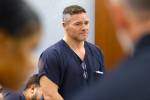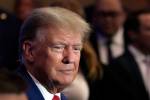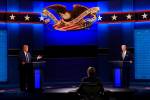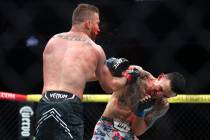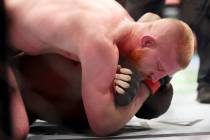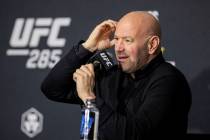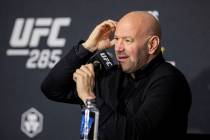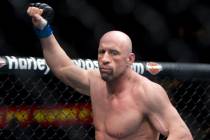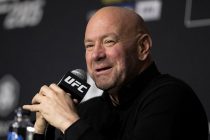Longtime sports official instrumental in UFC’s birth, growth

Not many people can say they were around for the birth of a modern sport, but longtime Las Vegas sports official Marc Ratner can.
As the executive director of the Nevada State Athletic Commission, he helped shape what became the Unified Rules of Mixed-Martial Arts in 2000, opening the door for the sport’s entry into Nevada and other states around the country.
Ratner became vice president of regulatory affairs for the owners of the Ultimate Fighting Championship in 2006 and helped expand the sport from 22 states to 40 in three years. In his office is a multicolored map highlighting the 10 states where the sport is not yet regulated.
Ratner has been a fixture on the regulatory side of sports in Southern Nevada for more than four decades.
He was a major-college football official for 30 years, has been the shot-clock operator at University of Nevada, Las Vegas basketball games since 1984, and a high school football and basketball official since 1966. He is now the commissioner of high school sports officials for Southern Nevada.
"You can’t have sports without officials," Ratner said of his life’s calling. "It has been a love of my life for these 40-plus years, especially at the high school level, because you can make a difference with some of the kids."
Ratner’s current position with Zuffa keeps him on the road as the fight league holds events around the world and works to enter new markets.
Last night he was in Manchester, England, for UFC 105. On Saturday he will be ringside at UFC 106 at Mandalay Bay.
He has traveled to potential markets such as Ottawa — eight times in the past 18 months — and frequently travels to Boston, where he is trying to assure Massachusetts regulators of the sport’s safety and viability.
Ratner’s goal is to have the UFC regulated in all 50 states and give the organization a global footprint before he retires, which he doesn’t plan on doing anytime soon.
Question: What attracted you to join Zuffa, the parent company of the UFC, after 22 years as a regulator?
Answer: A real important reason for me was to be on the ground floor of a new sport. I really felt I had the best regulatory job in the world. I loved being the director of the Nevada State Athletic Commission. So it was a really hard decision for me. None of us were around for the start of baseball or football. So for me, that was the tipping point.
Question: What are your duties with the organization?
Answer: Our overriding goal is that wherever there is an athletic commission, to have the sport of mixed-martial arts regulated and to have it approved. Our motto is to run to regulation, not away from it. So my job is looking at all these different states that don’t have the sport regulated and target them. We have 40 states that are now regulating the sport.
Question: When was your first mixed-martial arts encounter as a fight regulator?
Answer: In 1997, I was on a Larry King television show. On one side was myself and Sen. John McCain, R-Ariz. On the other was the former owner of Ultimate Fighting, Robert Meyrowitz, and fighter Ken Shamrock. In those days they advertised the UFC as no-holds-barred, anything goes, no rules. So I said that we could never regulate it in Nevada. We’re not going to have a sport with no rules. So I very publicly, on the record, said that would never happen. In late 2000, we had a big meeting in Newark, N.J. There were many promoters, fighters, people who were interested in the sport. At that meeting, we really hammered out what we now call the Unified Rules of Mixed-Martial Arts. After we hammered out those rules, the Nevada (Athletic) Commission was able to license it. That was in early 2001 (around the time the UFC was bought by Station Casinos executives Frank Fertitta III and brother Lorenzo Fertitta, who served on the Athletic Commission).
Question: How did you become the Nevada State Athletic Commission’s executive director?
Answer: I had been an inspector since 1984. In May 1992, the executive director, Chuck Minker, passed away from lung cancer at 41. I was still working at R&R Advertising. I discussed it with (R&R owners) Sig (Rogich) and Billy (Vassiliadis). Gov. (Bob) Miller had talked to me and the five-member commission, and with everybody’s blessing I became the executive director. I served until 2006 for some of the biggest fights in the sport’s history. I had the best regulatory job. Everybody was envious and jealous and didn’t like it that Nevada got all these fights.
Question: Is there any fight or event as a regulator that stands out?
Answer: I had several seminal moments, but the most bizarre was the Fan Man (A paraglider who parachuted into the ring of the outdoor Riddick Bowe and Evander Holyfield boxing match at Caesars Palace in 1993.) I had been the director for a year. We weren’t thinking terrorism. Today you’d think differently. My first reaction was to go to the timekeeper and find out how much time had elapsed in the round. Then I had to go the three judges to make sure they made a note about where they were in the round scoring. Nearly 21 minutes later, the round started again at 1:21 of the seventh round. Certainly, the Tyson bite fight was the most frightening. When I was walking through the casino after the fight, there was pure panic and people running and shrieking. I remember I turned around and went out a back way because I’d never seen that kind of panic in people’s faces.
Question: How did you get into sports officiating?
Answer: I saw an ad in 1966 that said, "If you go to these games and you think you can do better than these officials, why don’t you become one." I went over to Las Vegas High School and started learning the rules in football and basketball. I started officiating and I was very lucky and progressed. I would go to all the high schools in this area: Beatty, Tonopah, Panaca. I did all those little schools.
Question: How did you come to officiate college sports?
Answer: Back in the 1970s, UNLV could use local officials. In 1976 I started doing some UNLV (football) games. I applied to the conference UNLV was in and they took me in as an official. I worked for the various conferences UNLV was in, strictly football, through the years until the Mountain West Conference. I did that until I retired three years ago after the 2006 Cotton Bowl. I also did three bowl games. The highlight was officiating a game at Notre Dame. I am still on the field for high school football.
Contact reporter Arnold M. Knightly at aknightly@reviewjournal.com or 702-477-3893.
VITAL STATISTICSName: Marc Ratner.
Position: Vice president of regulatory affairs for Zuffa.
Family: Wife, Jodi; children, David, Mary and Heiden.
Education: University of Nevada, Reno.
Work history: High school football and basketball official, 1966-present; college football official, 1976-2006; R&R Advertising, 1982-1992; Nevada State Athletic Commission, inspector, 1984-1989, chief inspector, 1989-1992, executive director, 1992 -2006; Zuffa, vice president of regulatory affairs, 2006-present.
Hobbies: Collecting fight tickets and credentials from every fight worked, first-day covers of stamps.
Favorite book: “The Time Traveler’s Wife,” by Audrey Niffenegger.
In Las Vegas since: 1957.
Zuffa is at 2800 W. Sahara Ave. and can be reached through ufc.com



